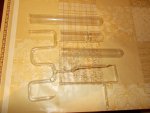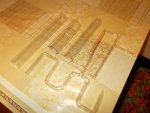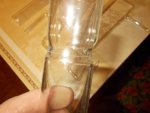- Joined
- Dec 4, 2016
- Messages
- 197
- Points
- 43
Does anybody have any experience in the art of glassblowing?
I have a fellow glassblower, who can make neon sign tubes and custom gas discharge lamps for spectroscopic research. Also he refurbished several gas lasers for me. I cannot ask him forever to do something for me, so I asked to gradually teach me this discipline, because in the future I want to make my own gas laser tubes especially CuBr ones.
I had the first lesson yesterday and several efforts to make the simplest operations became lucky, here are the results at the pictures. A couple of vials made of dead fluorescent lamps, a joint of two relatively wide pyrex tubes, a couple of randomly bent tubes with some random T-joints. The ugly bents in the middle of the tube are the first ones, at the ends -- better ones, when I learnt how to make them in the right way.
I did not take home the big randomly bent tube for neon lighting and a dephlegmator made by my own, because they were too big and fragile, I'll show them next time.
I have a fellow glassblower, who can make neon sign tubes and custom gas discharge lamps for spectroscopic research. Also he refurbished several gas lasers for me. I cannot ask him forever to do something for me, so I asked to gradually teach me this discipline, because in the future I want to make my own gas laser tubes especially CuBr ones.
I had the first lesson yesterday and several efforts to make the simplest operations became lucky, here are the results at the pictures. A couple of vials made of dead fluorescent lamps, a joint of two relatively wide pyrex tubes, a couple of randomly bent tubes with some random T-joints. The ugly bents in the middle of the tube are the first ones, at the ends -- better ones, when I learnt how to make them in the right way.
I did not take home the big randomly bent tube for neon lighting and a dephlegmator made by my own, because they were too big and fragile, I'll show them next time.
Attachments
Last edited:






